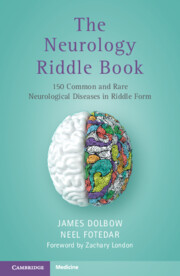Not atonic when should be,
In sleep, enactments you will see,
Alpha-synuclean accrue,
Years later tremor comes in view.
Hint #1
History provided by bed partner.
Hint #2
When you find the answer, draw a rem around it.
REM Sleep Behavior Disorder
Rapid eye movement (REM) sleep behavior disorder (RBD) is characterized by loss of atonia that is normally present in REM sleep. In addition, patients often enact their dreams.
An intricate circuit in the brainstem and hypothalamus controls the switch between non-REM and REM sleep. A discrete group of neurons in rostral pons – precoeruleus (PC) and sublaterodorsal tegmental nucleus (SLD) – are REM-on neurons, and their activity is responsible for the behavioral state of REM sleep and atonia. The SLD nucleus, in particular, projects to the spinal cord and is responsible for REM atonia. The PC nucleus, on the other hand, projects to the basal forebrain and medial septal nuclei and is responsible for the characteristic electroencephalogram (EEG) findings seen in REM sleep. Experimental lesional studies in animals and pathological studies in humans and animals have shown that the clinical syndrome of RBD is associated with pathology seen in this specific region of rostral pons.
One of the most important differential diagnoses for patients with RBD is an underlying alpha-synucleinopathy, for example, idiopathic Parkinson disease, dementia with Lewy bodies (DLB), and multiple system atrophy (MSA). In fact, it is believed that RBD represents an early stage of such neurodegenerative diseases, as the pathological protein accumulation invades rostral pons.
The diagnosis of RBD is made by video-polysomnography. The pathological hallmark is RSWA (REM sleep without atonia). It is identified by monitoring for excessive muscle activity in chin electromyography (EMG) electrodes during a 30-second REM epoch.
The first-line treatment for RBD is melatonin, which can be used in doses ranging from 3 to 18 mg and a second-line treatment option is clonazepam. Treatment is usually reserved for patients who are at risk of injuring their bed partners or themselves. Safe sleeping practices must also be observed.

